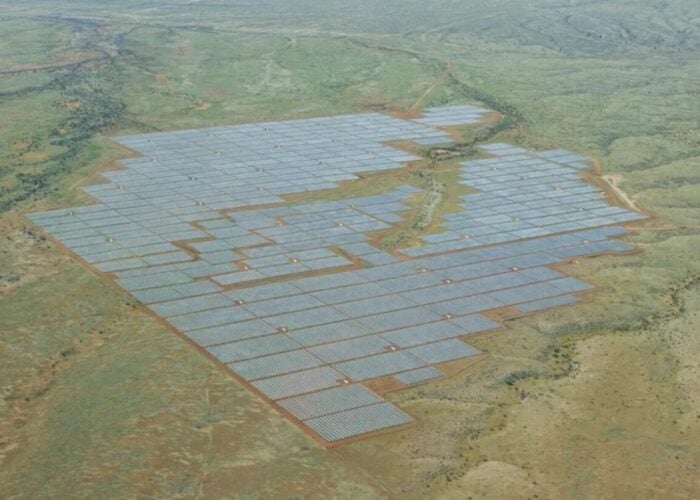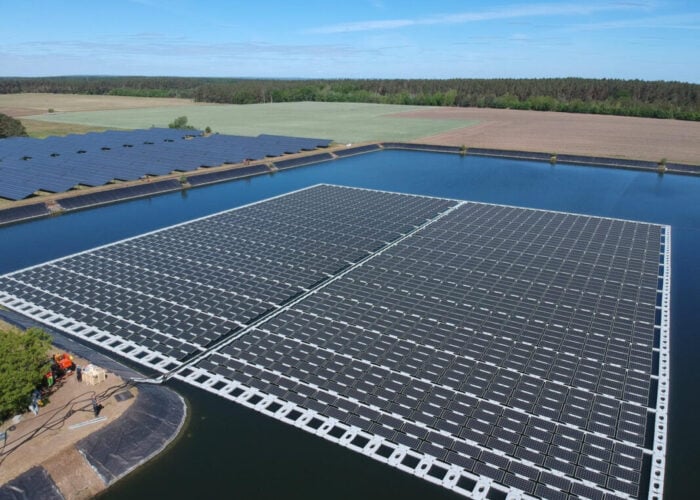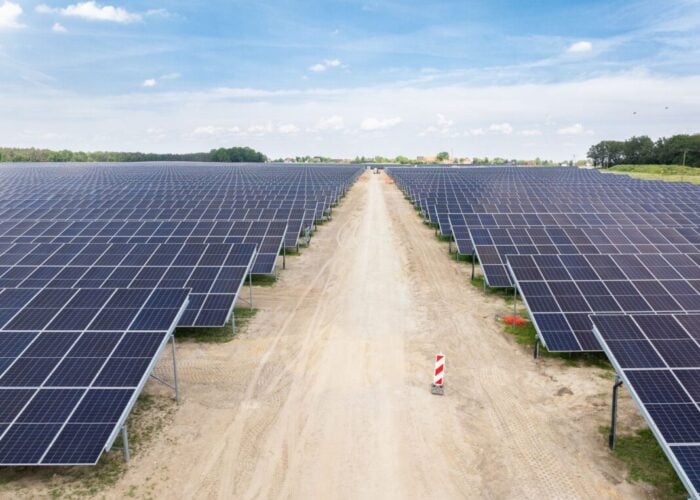As PV manufacturers prepare for Q2’11 reporting, the need to understand accurate industrywide capacity levels has become essential. Currently, much of the industry is addressing the prospect of widespread production cutbacks to allow record module inventory levels to be worked through. While in contrast, some Tier 1 producers continue to operate at close to full capacity utilization.
But the confusion doesn’t end there.
Unlock unlimited access for 12 whole months of distinctive global analysis
Photovoltaics International is now included.
- Regular insight and analysis of the industry’s biggest developments
- In-depth interviews with the industry’s leading figures
- Unlimited digital access to the PV Tech Power journal catalogue
- Unlimited digital access to the Photovoltaics International journal catalogue
- Access to more than 1,000 technical papers
- Discounts on Solar Media’s portfolio of events, in-person and virtual
Set against an environment of collapsing prices and margins, new entrants – with no prior PV manufacturing experience – still continue to bring more capacity online. Establishing how much of this capacity will be useful (or effective) has never been more pertinent.
Looking to the longer term, the need for accurate data will be just as critical as end-market demand is restimulated through lower prices. This will allow dominant manufacturers to pace their subsequent capacity expansions through to 2015, thereby accommodating different industry growth scenarios.
Historical methods of assessing PV capacity levels are proving inadequate, with total industry capacity calculations often being no more than a summation of ambitious, nameplate announcements – each typically assigned the same weighting or capability. However, this is not the only mistake encountered.
Annualized capacity at year-end is often presented as full-year manufacturing capacity, regardless of the effectiveness of each fab within any given year. Rather, annualized capacity at year-end is a figure representative of a maximum (and theoretical) capacity for the forthcoming year only.
Associating cumulative, annualized year-end capacities with practical capacity levels is highly misleading. Figures here can run from 38GW in 2010 to more than 60GW in 2012. Using these numbers together with industrywide production levels to generate utilization rates only creates confusion.
Were all fabs alike in their technical and commercial maturity, calculating the annualized capacity levels would almost be the whole story. Annualized capacity is by default a lower number than year-end capacity, owing to expansions having been performed throughout the year – the difference being most noticeable when a significant amount of capacity is added and ramped midyear (such as for 2010 and 2011).
However, not all PV fabs are created equal and this is one of the key overlooked issues. For example, capacity added by a Tier 1 Chinese vertically-integrated manufacturer has a considerably different risked impact on both supply and demand compared to capacity added, say, by a thin-film entrant using equipment with a limited track-record or a high-cost (pure-play) cell manufacturer. Adding up these capacities on a like-for-like basis is inappropriate. To account for this, Solarbuzz uses ‘effective’ scaling factors, either on a case-by-case basis or by Tier category assigned to every expansion phase.
This generates a more realistic capacity figure – combining quarterly-ramped (annualized) and production-capable (effective) capacity levels. However, this is still a somewhat technology-biased, best-case analysis: what remains missing is a good dose of commercial reality. This forms the basis of Tier level categorization.
Tier levels are being used somewhat liberally within the PV industry but require clearer definition. Tier categories are assigned by Solarbuzz at the fab level, allowing companies pursuing different manufacturing technologies to be treated separately. This also allows differentiation between cell lines that are legacy, market-competitive, or (as yet fully qualified) high-efficiency variants. Tier 1 fabs are characterized by:
- Capacity installed is in excess of 500MW.
- Technology has been qualified in high-volume production with low processing costs.
- Manufacturing is at mass-production status, typically supported by vertical upstream integration.
- Product (cell/panel) is competitive in current market climate, often accompanied by strong downstream participation and access to project pipelines.
There are less than 20 cell (and thin-film panel) producers (out of over 300) operating fabs that fall into the Tier 1 category. Note that the rationale for assigning companies here is not historical, but current or forward-looking only. (With the rate of manufacturing change during the past 24 months, previous achievements have minimal impact on future performance.)
The figure (above left) shows each capacity definition for the period 2010 to 2012 and goes a long way to explaining why the big capacity numbers quoted are not valid when assessing supply/demand and potential overcapacity.
Looking at the 2011 data, the Tier 1 annualized/effective capacity of 23GW is capable of meeting full-year demand, regardless of whether Tier 1 players choose to take advantage of an opportunistic spot market. However, Tier 2 and Tier 3 manufacturers are boosting the total annualized/effective capacity to nearly 36GW this year, having been somewhat misled by the events of 2010. This has created a highly competitive environment, ultimately forcing many Tier 2 and Tier 3 manufacturers to shut fabs or to decrease utilization rates significantly.
This imbalance may actually increase during 2012. Nearly 50GW of annualized/effective capacity will be available in 2012, but the Tier 1 group is on track to exceed 32GW – more than likely enough to meet full-year demand again. And this does not even factor in multi-GW inventory levels still to be worked through during 2H’11. As a result, some 200 cell producers globally will be in the at-risk category of surviving through to 2013.
Ultimately, the capacity data should frame the aspiration levels of the Tier 2 c-Si cell/module entrants (mainly within China) for 2011 and 2012, and the level of business – if any – that is available to them. Their ability to operate cash-positive at a time when margins at Tier 1 participants are being eroded to single-digit figures will become the most important factor driving a widespread shakeout of unprofitable fabs within the midstream PV segment.






